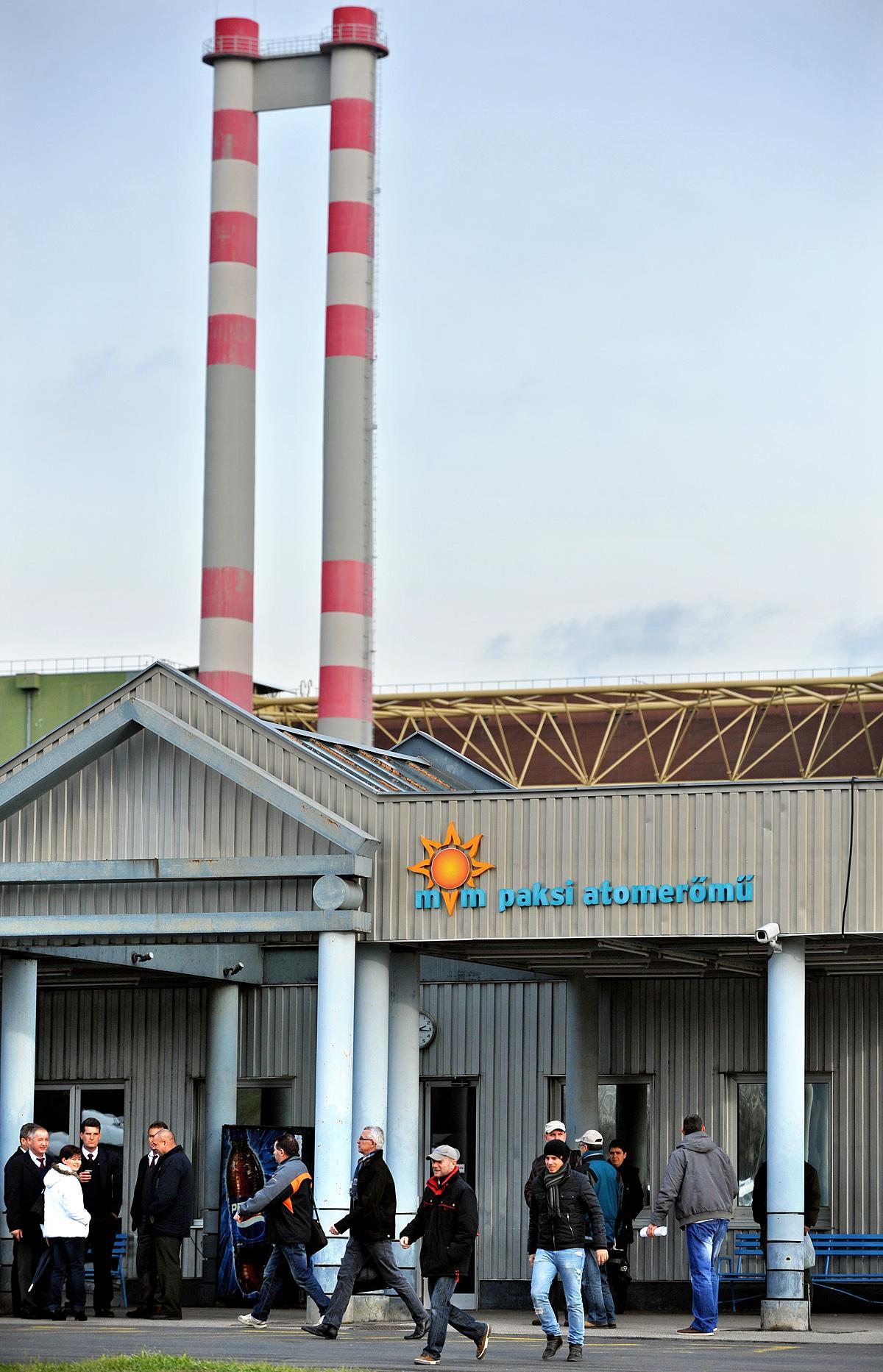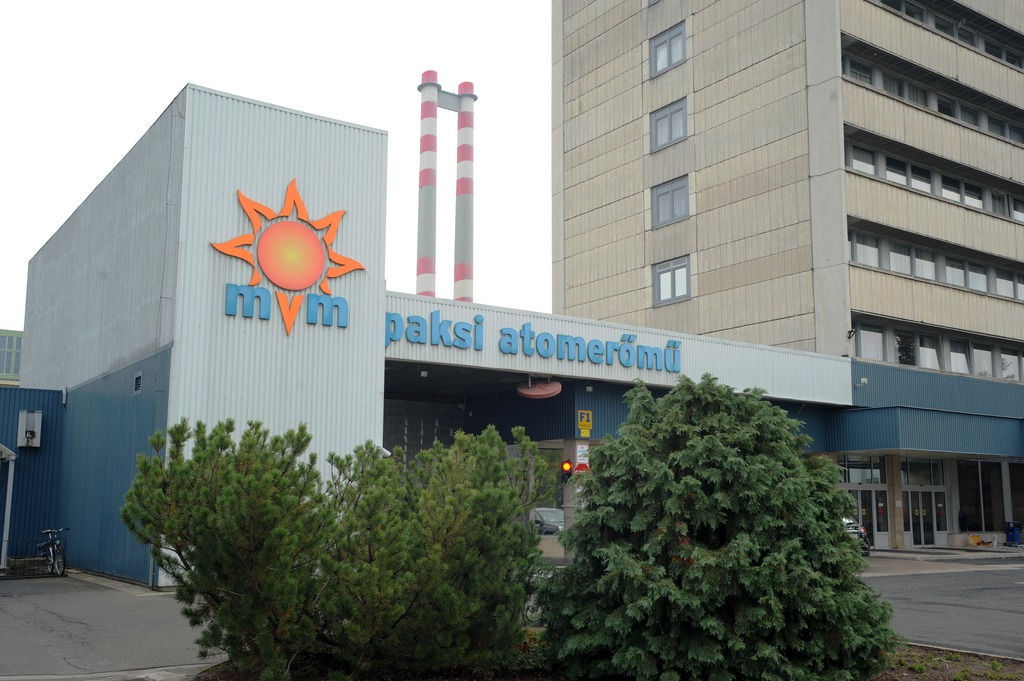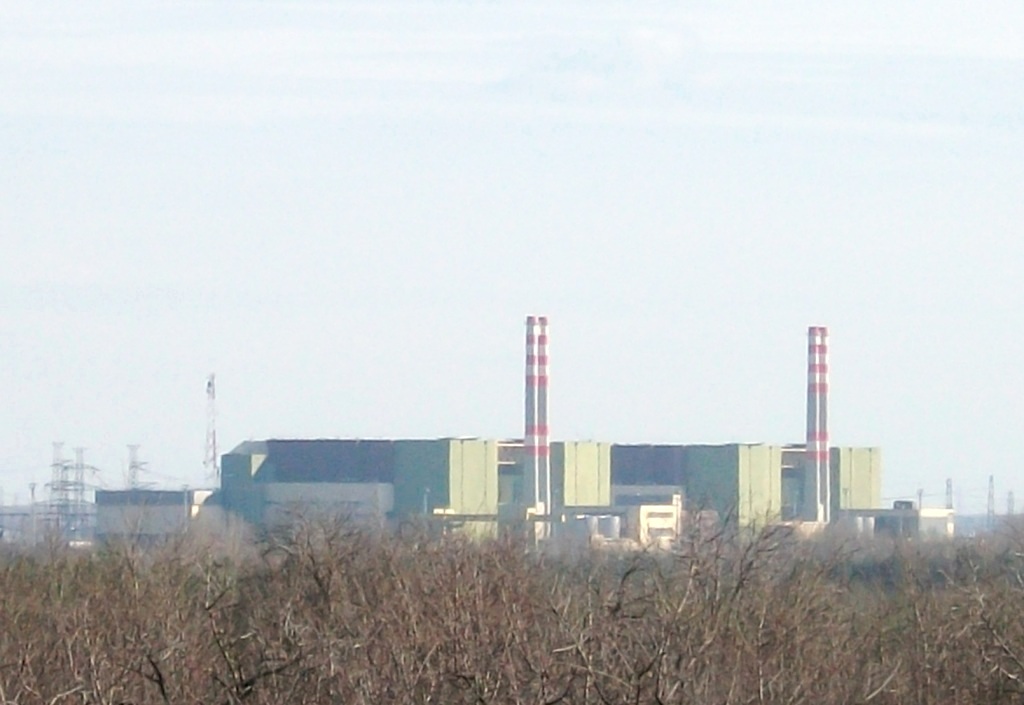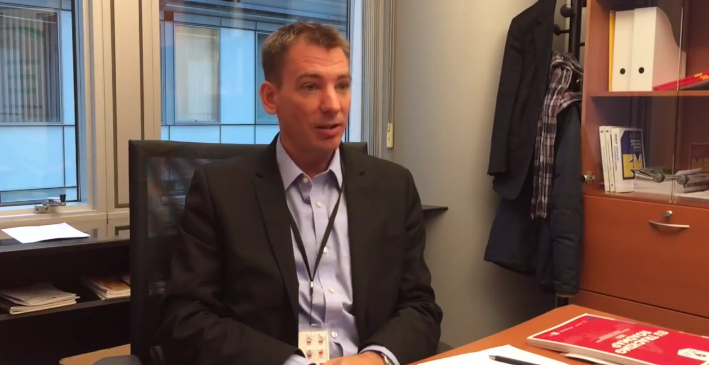The environmental impact assessment documentation (EIAD) provided by the investor is incomprehensible, including a mass of information which is often contradictory and difficult to follow. It is possible that even the authors themselves had problems seeing that mass of information to an extent that would have been necessary for coherent editorial follow-up of changes. The study shows serious signs of hastiness; conditions to concepts created in different time phases are mixed in both the written and graphic materials. The editing, which was seemingly aimed at producing a mass of information rather than relevant content, resulted in a study full of redundancies with materials that are either irrelevant or are not necessarily connected to the project concerned.
The conditions and requirements for building nuclear facilities have undergone significant changes in the last few decades. The amount of electricity produced in nuclear power plants has reached its peak during the 90s; it has shown a descending tendency ever since.
The costs and time need for realizing new European reactors show significant risks. The complete expenses of these investments can only be estimated with great uncertainty, they are, in fact, unpredictable. The financial impact of the construction delays exceeding the deadlines are of a similar magnitude than those coming from the inflation of costs during construction periods.
The consequences of cost-escalation, which are typical of building nuclear power plants, occur even with projects undertaken by European nuclear power plant investors with significant routine, such as EDF and TVO. Not even the EPC contract is guarantee enough against cost-escalation by itself, as higher costs are in the interest of the main investor. The expected risks of the Paks expansion project cannot be adequately assessed, because neither the financial agreements nor the EPC contracts are accessible. Most of the experts who have experience in similar major investments have retired. It is highly improbable that the employees of Paks II Ltd., who were mainly selected from the operator circles, or the members of the MVM-ERBE Ltd. are capable of avoiding the risks of cost-excess.
The time needed for the construction as stated in the EIAD is underestimated. The planned operational date for the new blocks is not in line with what has been hitherto communicated: operational dates do no correspond with the published dates of construction, credit uptake or the dates included in the EPC contract. The information in the study could be understood as if to suggest that the second block of the expansion will probably not be realized. It would be reasonable to modify the permit request and adjust it to the actual requirements.
The 60 years of lifespan that the EIAD works with is, for now, merely a theoretical assumption, not yet evidenced with empirical operational data. Economic evaluations regarding the 60-year-lifespan can thus only be seen as no more than a theoretical mathematical example.
The claim that the new PaksII nuclear power plant is exempt from the risks of using the prototype, is also not backed by evidence.
The electricity-production costs of the planned investment are underestimated as well; they also contradict values that were estimated in connection with the Hungarian project by both international and Hungarian expert organizations. According to the calculations of the International Energy Agency and the Nuclear Energy Agency the assumption about cheap nuclear energy is not correct, since its cost-level depends on multiple factors, primarily on the costs of financing; thus, compared to renewables it becomes less competent. The cost of electricity produced by the Paks expansion is significantly higher than the expected market cost-level; therefore, it is not market-compatible. The project’s market entry and the return of the investment is dubious or improbable without some kind of market entry assistance. Such assistance, however, can cause damage in the price contests, therefore, the European Commission decided that the aid construction of the government was against EU competition law, which, in turn, could lead the produced electricity to be squeezed out of the market because it is too expensive. This complex problem can bring about unexpected changes.
All of the above point to the fact that the preparation and the planning of the project is weak. Essential uncertainties and questions about risks remain open.
Conditions that are inevitable to the operation of the block are also missing: the means to system-regulation, reserve insurance and schedule balancing are not even referred to. In order for the planned facility to become a capacity that produces highly utilizable and cheap electricity, the conditions for system-regulation and effective operation should be planned.
The energy and electricity market environment used in the EIAD is outdated. The electricity need and the future needs also seem exaggerated in the current context.
It would be reasonable to improve the graphic capacity plan of the study, as it lost its timeliness and lacks the description of what can be expected after the implementation of the electricity producing capacity of the planned expansion, and which therefore barely has any valid content remaining.
The expected role of the import, as well as the calculations for the expected amount of import for both middle and long terms were also left out from the capacity plan of the EIAD. This is closely connected to the size of the necessary domestic producing capacity as well as the ideas on reducing the extent of energy dependence.
The implementation of the two new blocks will alter the production structure. The means necessary for realizing n-1 security requirements and for schedule-tracking will be changed substantially. The necessary changes should be handled in a complex manner – regarding reserve insurance, regulation, schedule tracking – and be modelled in the most cost effective way. It is misleading that the document handles additional investments necessary for the system separately from the planned investment, as this merely reduces the perceived costs of the investment, not the actual ones, as these extensions are only necessary because of the introduction of the new blocks. Separating them from the planned investment can result in the failure of implementing them, which can, in turn, cause cost-excesses and restraints in the electricity producing system as well as an additional increase in energy dependency.
The means of system-integration and system-adjustment need to ensure that the most optimal utilization, the highest cost-efficiency, and that the highest utilization of the nuclear capacity be possible. According to the EIAD, currently no one is in charge of the task of system-integration.
It is an inevitable condition of the two-block Paks expansion to balance system-loads as well as to increase minimum nighttime system loads (base loads). If this remains unaddressed, an approximate 5 TWh/year reduction in production can come about in the already operating plants, and an additional 2 TWh/ year reduction can come about in the new blocks of the expansion. The economic value of a 7 TWh/year reduction is so significant that there is no argument for ignoring it in the EIAD.
Minimizing or eliminating downward balancing makes intervention necessary in the period of small system loads. From the perspective of system load, significant and regulated amount of nighttime loads would be needed.
With the introduction of the new blocks, systematic power outage reserves, that is, the n-1-safety-reserve-capacities, will approximately be increased by 700 MWs, as the performance of the largest block of the system will be increased from 500 MWs to 1200 MWs. At the same time, the already existing 500 MWs of outage reserve capacity will reach the end of its lifespan. Measures have to be taken in order for the 1200 MW reserve to be accessible and for the costs to be covered. Cost recovery is the responsibility of MAVIR Ltd. as the system manager, regardless of the fact that the overcapacities are needed not because of system management or the operation of the transmission network, but because of the introduction of the new high-performance nuclear power plant blocks.
The PAKS1 cooling-water system was never in compliance with the n-1 safety requirements. The examples to be mentioned are the warm-water canal or the energy dissipater that can cause a complete system failure in the entire nuclear power plant. The reparation of the dissipater has been unresolved for years now. The new cooling-water system for PaksII described in the EIAD does most probably not comply with the n-1 safety requirements or the nuclear safety and protection requirements laid down by the International Atomic Energy Agency. There is a lack of means to eliminate the consequences in case of abnormal system operation, as well as to prevent further escalations. There are no built-in protection devices.
The need for the establishment of n-1 security and the necessity of and possibility for the elimination of a single safety measure has skipped the attention of the authors of the documentation. With an adequate construction, the cooling of the new blocks of the expansion could provide an opportunity to modify single safety measures and to establish n-1 safety.
Based on the EIAD, it is without doubt that the review of the cooling concept is needed. Possible cooling alternatives were not assessed to their full extent in the EIAD. Neither does the document present the conditions that could substantiate a decision between fresh-water cooling or cooling tower solutions. The cost-effect analysis is substituted with a rudimentary SWOT table without numbers.
According to the EIAD only the open-system fresh-water cooling mechanism was examined, but even this needs to be improved on: the cooling of the new blocks should be developed with regard to the conditions of the given location and in a way that the conditions for cooling do not limit electricity production and that they do not cause hindrances to the neighboring area’s economic development (such as boating) during the planned lifespan of the power plant.
From the possible solutions of fresh-water cooling, the writers of the study chose the one corresponding with the alternative already used. They excluded the water extraction beside the mainstream of the Danube River with a false reason and the explanation of the decision shows ignorance. Developing a cooling system similar to that of the previous one is flawed for multiple reasons.
It would be preferable to learn from past mistakes instead of repeating them. Both the examples of Százhalombatta and Paks prove that the construction of the cool-water canal to function as an alluvial trap did not live up to expectations in river forks without flows. Neither the constant need for dredging, nor taking the risk of silting is necessarily justifiable. There are examples for other solutions even within country borders.
In order for the creation of an adequate cool-water canal, a near-two-meter deepening was proposed. Given the continuous operation of the current power plant blocks, the execution of deepening and widening the channels, as well as making paving constructions is highly problematic. The safety of ceaseless operation would make it necessary to find a solution for constructions independent of the operating facilities. The document does not contain tendencies regarding changes in the water level and bed-depth of the Danube River; neither does it convey data about water discharge. Therefore, the two-meter deepening of the cool-water canal is meaningless concerning the entire lifespan. The study does not contain any calculations or explanations about the extent of deepening or whether cooling-water supply is secured in all circumstances regarding the Danube River’s water flow.
The execution of the warm-water canal’s branching as well as its reconstruction during the operational phase is also questionable. The security of ceaseless operation makes it necessary to find a solution regardless of the facilities’ operation in this case as well. The amount of water discharge brought in through the energy dissipater is currently 100m3/sec; this would be 132m3/sec at the planned new recirculation point. The description of the means of this mechanism is also missing from the study. Another section of the study explains that the entire amount of water flow will be brought in through the new recirculation point. If the latter is true, all flow-models are wrong. Either the concept or the coordination is missing.
The study does not contain size-proportionate graphics or river-bed measures regarding warm-water recirculation. In the absence of these, there is no way of examining the water flow models in the case of cool-water extraction or warm-water recirculation. Therefore, the amount of recirculation of warm water cannot be properly estimated.
The idea of a hydropower plant co-constructed with an energy dissipater is a vocational paradox. Energy is either dissipated or utilized. The descriptions of the second lead-in point and the recuperating hydropower plant show signs of vocational incompetence. The contradicting statements of the study suggest that the project manager has never run even an elementary quality-assurance check.
The compliance with the limits of wildlife protection seems to have been of complete unimportance for the EIAD. The proposal on the establishment of a monitoring system to ensure compliance with heat load limits is also absent; there is a mere reference to information contained in the self-monitoring plan.
The water temperature cannot exceed 30 Celsius degrees at any point of the segment from the extraction point to the next 500 meters in the direction of the river-flow. The Directive of the European Parliament and the Council is stricter: the temperature cannot exceed 28 Celsius degrees at the edge of the mixing zone. In the meantime it is to be expected that requirements will become stricter and will place limits to the amount water extraction. According to the Directive, temperature limits can be exceed in 2% of the time. In order to see what possible damages this can cause to the aquatic life, it would be advisable to examine how aquatic organisms react to the conditions that temperature loads will create in the standard time phase concerned.
Following the implementation of the planned expansion, during the summer period, there is a theoretical possibility for becoming unable to keep water temperature limits in the small and middle water-flow periods. According to calculations, on a standard summer day the limit of 30 Celsius degrees cannot be kept within the reference segment.
The estimation of 1500m3/sec water discharge from the Danube, taken as a basis for warm-water transfusion, is not correct; it is too high. According to hydrological studies made for the expansion of the operational time of the Paks Power Plant, the small water discharges from the Danube are actually below 900 and 1000m3/sec. The mistaken selection of base data for modelling suggests that the adequate assessment of accessible data was not carried out. It is highly improbable that a 1500m3/sec water discharge from the Danube and a 33-Celsius-degree extraction-water would occur simultaneously. The modelling of warm-water transfusion should be done again, this time taking realistic values of water flow and water level as well as with the realistic distribution of water recirculation.
The descriptions of flow and heat load models contain redundant information to an unmanageable extent. This information pertains to the actual subject only on a theoretical level; its practical significance in terms of the operation and effects of the project is non-existent. The legality of use for boating/navigation data for the EIAD is also questionable.
It is important to notice that the study uses various 1D, 2D and 3D models for seemingly irrelevant reasons. What these have in common is that they are all based on some freely downloadable software. There is no complete 3D model for the examination of transfusion/water mixture in the EIAD. As the simplifications and approximations of these free softwares is not included in the study, the results of these models can be misleading.
The contradicting statements in the EIAD suggest that its authors did not develop a unified system of criteria to rate the effects.
As a solution for the possible excess of water temperature limits, the EIAD proposes the down-balancing or the shut-down of the blocks, clearly excluding all other possibilities. Both down-balancing and shutting down create a need for availability and auxiliary capacity in the electricity system. The conditions for the above were probably not assessed, thus the cost of insuring additional reserves cannot be estimated.
The effects of locating the extractions from the cool-water canal near the new point of warm-water recirculation should be examined as well as its functionality in the entire operating range. Non-permitted negative effects should be eliminated through technical means.
There is an urgent and inevitable need for expert revision and quality assurance! The greatest investment of the country would have deserved a documentation better prepared and researched than the one published.










